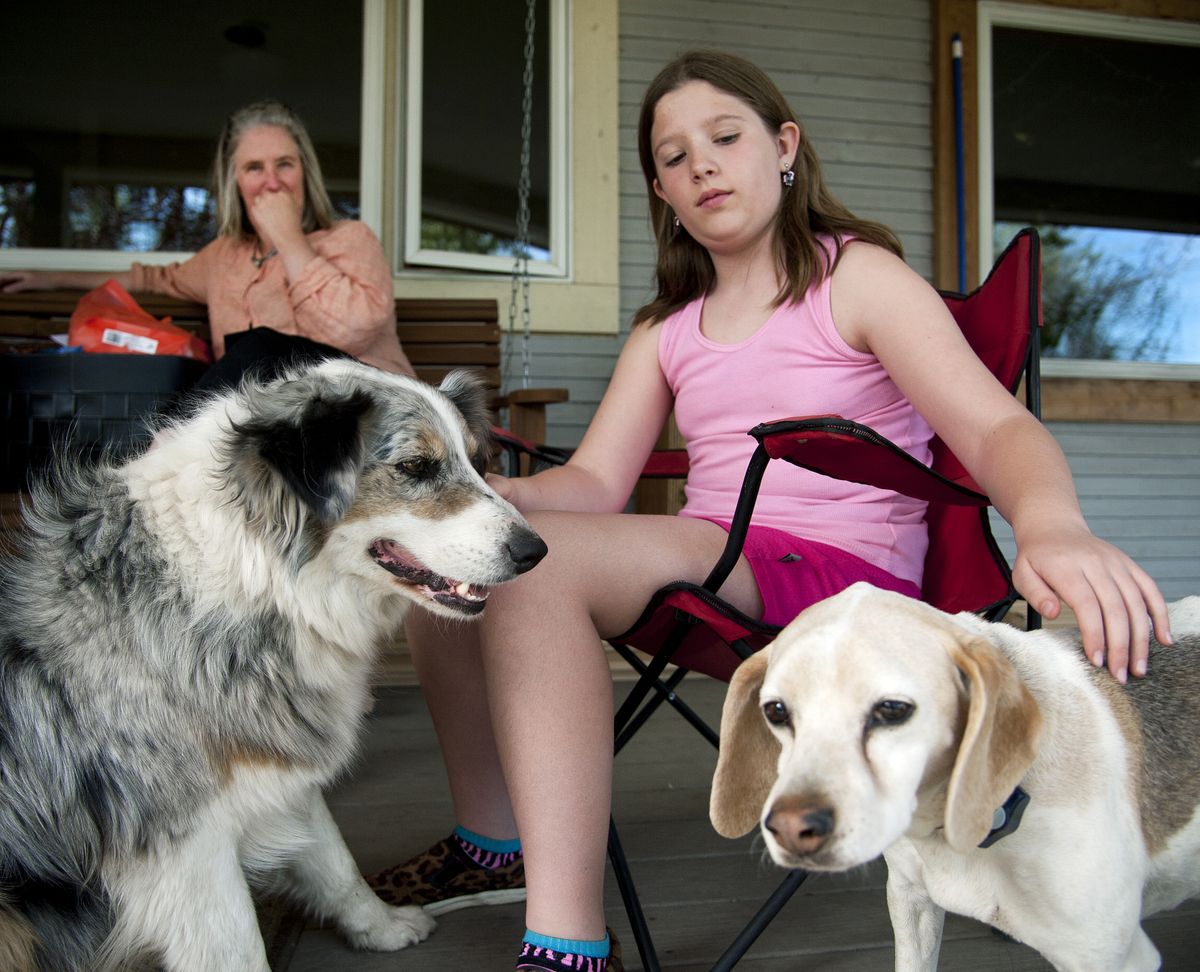Providence Children’s Hospital uses art program to ease anxiety, speed recovery

Art gave Aria Layton an outlet for expressing her feelings during her cancer treatment.
The frequent stays at Providence Children’s Hospital were monotonous for the Airway Heights girl, who was diagnosed at age 4 with acute lymphoblastic leukemia and underwent three years of chemotherapy.
“She would get tired of watching movies. Then the art therapist would come in and say, ‘Let’s draw,’ ” said her dad, Dr. Matt Layton, a psychiatrist.
His small, wan daughter would perk up, pictures of people and yellow sunshine appearing on her page.
Aria is a healthy 11-year-old now, but her mom, Julia Hayes, still chokes up when she looks through the box containing her daughter’s artwork from that time. Pictures with bright colors and typical childhood themes helped reassure her that Aria was coping emotionally.
“It wasn’t all dark and gray,” Hayes said of her daughter’s drawings.
Hayes and her husband are firm believers in the therapeutic value of art during a serious illness. It’s a conviction they share with Bill Miller, a chaplain at Providence Sacred Heart Medical Center and Children’s Hospital.
“You’re doing this playful, superficial activity, but it goes right to the core,” said Miller, who helped launch Providence’s Arts in Healing program five years ago, after learning about the emotional and physiological benefits of art during treatment. “It doesn’t get rid of the issues, but it begins to make them manageable.”
Providence’s program provides a part-time art therapist in the Children’s Hospital, and volunteer artists who work with Sacred Heart’s adult patients on music, dance, writing and visual arts.
But Miller hopes to expand the reach of therapeutic art: He’s working on a Web-based video series aimed at children ages 5 to 10, which could be used in hospitals across the country.
He recently launched a Kickstarter campaign to raise $45,000 to produce a pilot video and test its effectiveness. The nautical-themed series, “Arts Ahoy,” is intended to help kids express the emotions they feel in the hospital – from scared and sad to angry, bored and homesick – through pictures and paintings.
“It empowers them to explore a negative emotion,” Miller said. “They name it, so it enhances their emotional vocabulary, and they process it in a safe space.”
Miller drew on his previous work as a creative director in advertising to create Arts Ahoy. The storyline follows Miller (Captain Billy) and Admiral Bird, a talking parrot, as their ship travels to the Isles of Emotion. The episodes encourage kids to paint or draw pictures expressing their feelings, and a follow-up picture that resolves the emotion. The kids can also create a secure, online gallery of their work.
Arts Ahoy has an enthusiastic fan in Aria, who gave it the ringing endorsement of a fifth-grader: “It’s awesome,” she said.
Arts Ahoy is not affiliated with Providence, but the concept has the support of Ann Walker, the hospital’s art therapist, who is a collaborator on the project.
Like talk therapy for adults, art therapy helps kids process emotions and gain insights into their feelings, Walker said.
“The way children process experiences is through art and creative play,” said Walker. “Art taps into the nonverbal part of the brain. It helps them release traumatic emotions and integrate the experience.”
Though interacting with a video isn’t the same as working one-on-one with an art therapist, it helps guide patients through creative self-expression, she said. Both Miller and Walker envision the video series as augmenting established art therapy programs in children’s hospitals, or providing an outlet for pediatric patients in hospitals that don’t have art programs.
Once Arts Ahoy launches, Miller is eager to find a researcher interested in long-term tracking of patients who use the program.
“We have this body of evidence that kids heal faster, use less pain medication and stay well longer when they engage in therapeutic art,” Miller said.
But many of the studies involve small groups of patients, he said. Since Arts Ahoy is Web-based, it could provide a larger pool of patients for research, Miller said.
The connection between art and healing is an interesting one, said Layton, Aria’s dad. “I would say that if art reduces your stress response, your body heals faster,” he said. And emotionally, he and his wife both benefited from Aria’s art therapy.
Having a critically ill child is a helpless feeling for a parent. Watching their daughter draw and paint was “just a little injection of normal,” Hayes said. Art provided a respite – “five minutes of Aria not feeling so icky.”
Aria is now an energetic middle child. She likes to have friends over and to romp with the family’s four dogs. But she still enjoys art as a form of expression.
“I draw people with exaggerated long hair. I love to draw trees. I try to draw horses,” Aria said.
Her recent work includes a pencil drawing of a peacock with an elaborate tail and a picture of a pig for her teacher, who likes pigs.
“Art helped preserve her sense of innocence,” Hayes said. “She couldn’t be outside. She didn’t have the energy to ride a bike or play hopscotch. But she could still engage in imaginative play.”